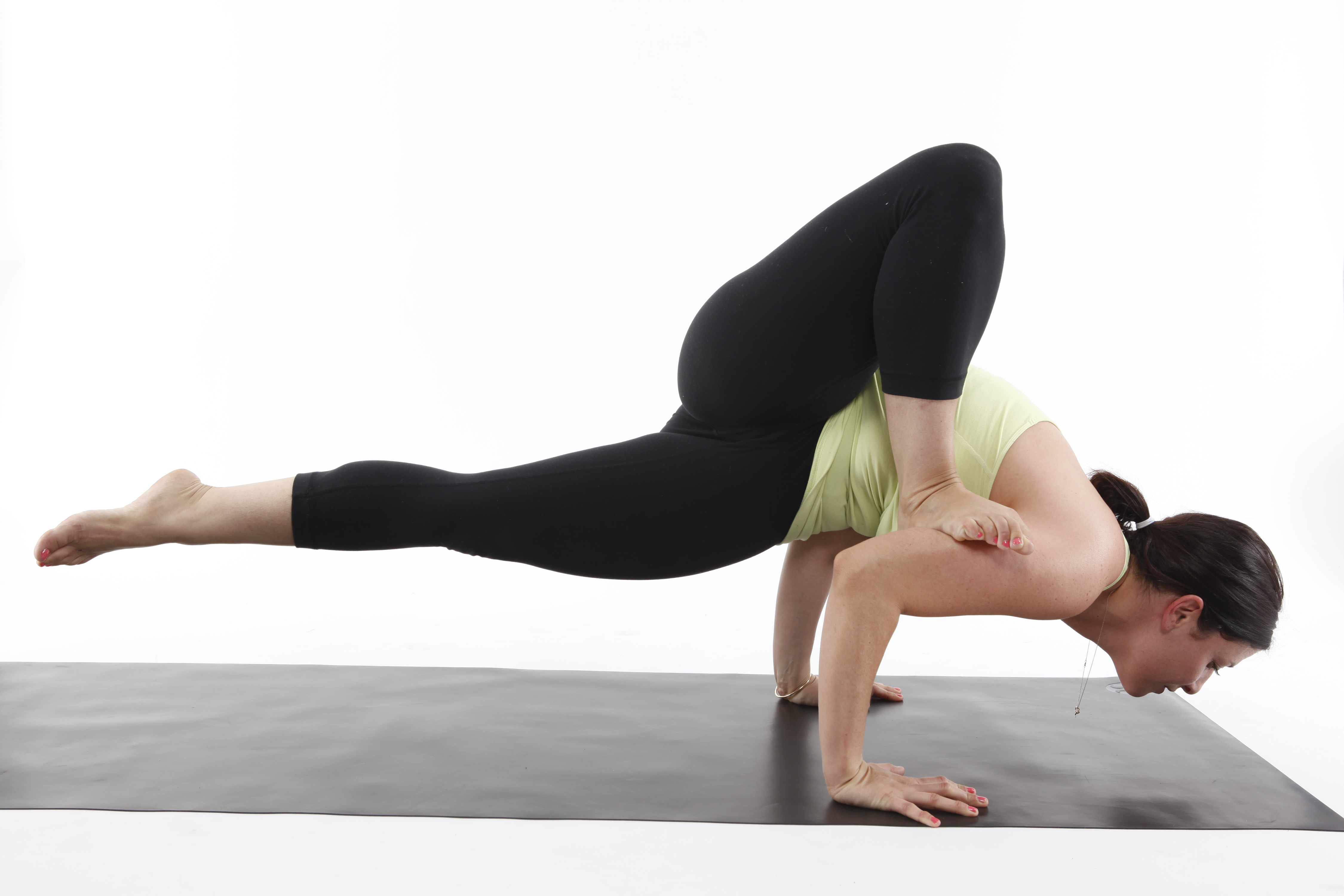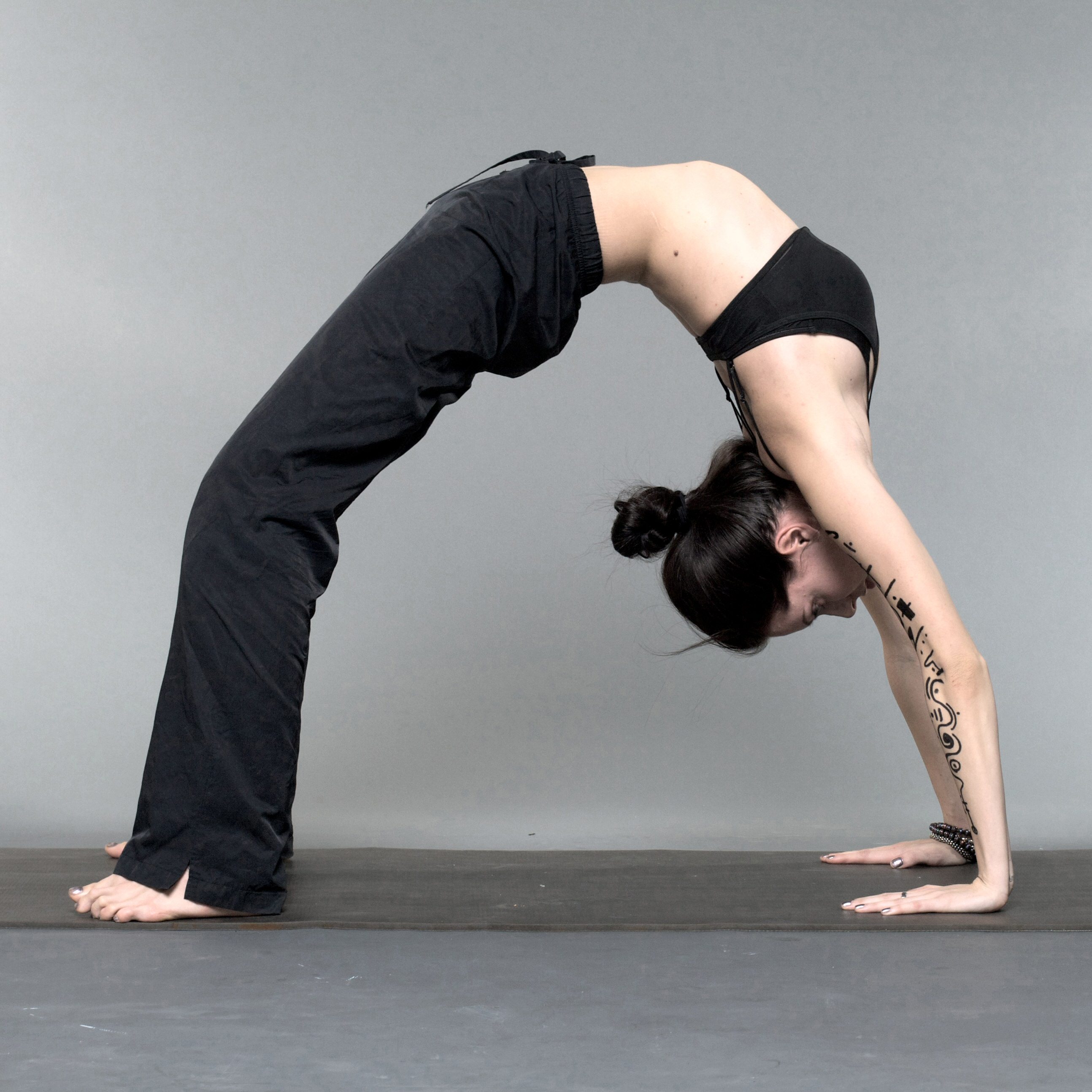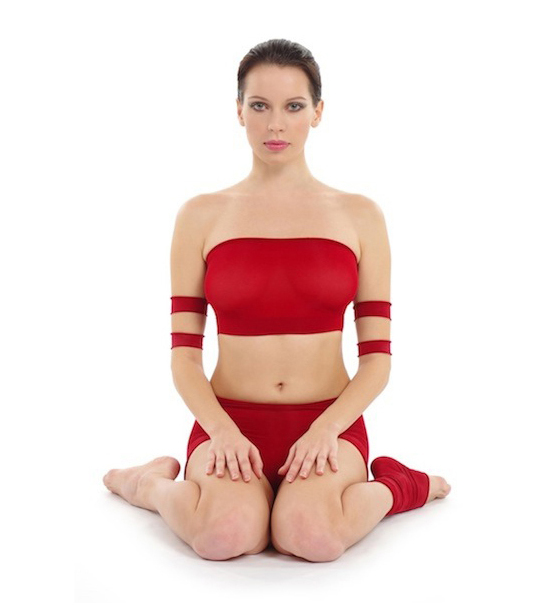|
List Of Asanas
An asana is a body posture, used in both medieval hatha yoga and modern yoga. The term is derived from the Sanskrit word for 'seat'. While many of the oldest mentioned asanas are indeed seated postures for meditation, asanas may be standing, seated, arm-balances, twists, inversions, forward bends, backbends, or reclining in prone or supine positions. The asanas have been given a variety of English names by competing schools of yoga. The traditional number of asanas is the symbolic 84, but different texts identify different selections, sometimes listing their names without describing them. Some names have been given to different asanas over the centuries, and some asanas have been known by a variety of names, making tracing and the assignment of dates difficult. For example, the name Muktasana is now given to a variant of Siddhasana with one foot in front of the other, but has also been used for Siddhasana and other cross-legged meditation poses. As another example, the headstand ... [...More Info...] [...Related Items...] OR: [Wikipedia] [Google] [Baidu] |
Ardha Padmasana
Lotus position or Padmasana ( sa, पद्मासन, translit=padmāsana) is a cross-legged sitting meditation pose from ancient India, in which each foot is placed on the opposite thigh. It is an ancient asana in yoga, predating hatha yoga, and is widely used for meditation in Hindu, Tantra, Jain, and Buddhist traditions. Variations include easy pose (Sukhasana), half lotus, bound lotus, and psychic union pose. Advanced variations of several other asanas including yoga headstand have the legs in lotus or half lotus. The pose can be uncomfortable for people not used to sitting on the floor, and attempts to force the legs into position can injure the knees. Shiva, the meditating ascetic God of Hinduism, Gautama Buddha, the founder of Buddhism, and the Tirthankaras in Jainism have been depicted in the lotus position, especially in statues. The pose is emblematic both of Buddhist meditation and of yoga, and as such has found a place in Western culture as a symbol of healthy ... [...More Info...] [...Related Items...] OR: [Wikipedia] [Google] [Baidu] |
Warrior II
Virabhadrasana ( sa , वीरभद्रासन; IAST: Vīrabhadrāsana) or Warrior Pose is a group of related lunging standing asanas in modern yoga as exercise commemorating the exploits of a mythical warrior, Virabhadra. The name of the pose derives from the Hindu myth, but the pose is not recorded in the hatha yoga tradition until the 20th century. Virabhadrasana has some similarity with poses in the gymnastics of Niels Bukh the early 20th century; it has been suggested that it was adopted into yoga from the tradition of physical culture in India at that time, which was influenced by European gymnastics. Virabhadrasana has been described as one of the most iconic poses in yoga. Etymology and origins The name is from the Sanskrit वीरभद्र ''Vīrabhadra'', a mythical warrior, and आसन ''āsana'', a yoga posture or meditation seat. Accordingly the asana is often called "Warrior Pose" in English. Ancient cave rock sculptures in the Ellora Caves, spe ... [...More Info...] [...Related Items...] OR: [Wikipedia] [Google] [Baidu] |
Yoga Journal
''Yoga Journal'' is a website and digital journal, formerly a print magazine, on yoga as exercise founded in California in 1975 with the goal of combining the essence of traditional yoga with scientific understanding. It has produced live events and materials such as DVDs on yoga and related subjects. The magazine grew from the California Yoga Teachers Association's newsletter, which was called ''The Word''. ''Yoga Journal'' has repeatedly won Western Publications Association's Maggie Awards for "Best Health and Fitness Magazine". It has however been criticized for representing yoga as being intended for affluent white women; in 2019 it attempted to remedy this by choosing a wider variety of yoga models. Beginnings ''Yoga Journal'' was started in May 1975 by the California Yoga Teachers Association (CYTA), with Rama Jyoti Vernon as President, William Staniger as the founding editor, and Judith Lasater on the board and serving as copy editor. Their goal was to combine "the ... [...More Info...] [...Related Items...] OR: [Wikipedia] [Google] [Baidu] |
Light On Yoga
''Light on Yoga: Yoga Dipika'' (Sanskrit: योग दीपिका, "Yoga Dīpikā") is a 1966 book on the Iyengar Yoga style of modern yoga as exercise by B. K. S. Iyengar, first published in English. It describes more than 200 yoga postures or asanas, and is illustrated with some 600 monochrome photographs of Iyengar demonstrating these. The book has been described as the 'bible of modern yoga', and its presentation of the asanas has been called "unprecedented" and "encyclopedic". It has been translated into at least 23 languages and has sold over three million copies. Context Yoga is a group of physical, mental, and spiritual practices from ancient India, forming one of the six orthodox schools of Hindu philosophical traditions. In the Western world, however, yoga is often taken to mean a modern form of medieval Hatha yoga, practised mainly for exercise, consisting largely of the postures called asanas. B. K. S. Iyengar (1918-2014) was born in a poor family of B ... [...More Info...] [...Related Items...] OR: [Wikipedia] [Google] [Baidu] |
Viparita Dandasana
Viparita Dandasana (Sanskrit: विपरीत दण्डासन, IAST: Viparīta Daṇḍāsana) or Inverted Staff Pose is an inverted back-bending asana in modern yoga as exercise Yoga as exercise is a physical activity consisting mainly of postures, often connected by flowing sequences, sometimes accompanied by breathing exercises, and frequently ending with relaxation lying down or meditation. Yoga in this form has .... It may be performed with both feet on the ground, or with one leg raised straight up. Etymology and origins The name of this asana comes from Sanskrit विपरीत ''viparīta'', "inverted", दण्ड ''daṇḍa'', "staff" symbolising authority and the devotee's prostration, and आसन ''āsana'', "posture" or "seat". The variants are named for Sanskrit एक ''eka'', "one" or द्वि ''dvi'', "two", and पाद ''pada'', "foot". The asana is not found in medieval Hatha yoga texts. It is described in the 20th century by ... [...More Info...] [...Related Items...] OR: [Wikipedia] [Google] [Baidu] |
Utthita Parsvakonasana
Utthita Parshvakonasana (Sanskrit: उत्थित पार्श्वकोणासन; IAST: ''utthita pārśvakoṇāsana''),"Extended Side Angle Pose." Yoga Journal. Cruz Bay Publishing, 2013. Web. 10 Aug. 2013. Extended Side Angle Pose, is an asana in modern yoga as exercise. It is first described in 20th century texts. Etymology and origins The name comes from the Sanskrit words ''utthita'' meaning "extended", ''parsva'' meaning "side or flank", ''kona'' meaning "angle", and ''asana'' meaning "posture or seat". The pose is not mentioned in medieval hatha yoga texts. It appears in the 20th century in Krishnamacharya's school of yoga in Mysore, and in the teaching of his pupils Pattabhi Jois and B. K. S. Iyengar, along with other asanas with names that describe the position of the body and its limbs. Description The pose is entered from Tadasana; the legs are spread wide apart, the feet are turned out as for Trikonasana Trikonasana or Utthita Trikonasana ( s ... [...More Info...] [...Related Items...] OR: [Wikipedia] [Google] [Baidu] |
Urdhva Dhanurasana
Chakrasana ( sa, चक्रासन, lit=Wheel Pose, translit=Cakrāsana) or Urdhva Dhanurasana ( sa, ऊर्ध्वधनुरासन, lit=Upward-Facing Bow Pose, translit=Ūrdhvadhanurāsana) is a backbending asana in yoga as exercise. The one-legged variant is often chosen by yoga practitioners who wish to advertise themselves. Etymology and origins The name Chakrasana comes from the Sanskrit words चक्र ''chakra'', "wheel", and आसन ''āsana'', "posture" or "seat". The name Urdhva Dhanurasana comes from the Sanskrit ''urdhva'' ऊर्ध्व, upwards, and ''dhanura'' धनु, a bow (for shooting arrows). The pose is illustrated in the 19th century ''Sritattvanidhi'' as ''Paryaṇkāsana'', Couch Pose. Description In the general form of the asana, the practitioner has hands and feet on the floor, and the abdomen arches up toward the sky. It may be entered from a supine position or through a less rigorous supine backbend, such as Setu Bandha Sarva ... [...More Info...] [...Related Items...] OR: [Wikipedia] [Google] [Baidu] |
Upavishta Konasana
Pashchimottanasana ( sa, पश्चिमोत्तानासन, translit=paścimottānāsana), Seated Forward Bend, or Intense Dorsal Stretch is a seated forward-bending asana in hatha yoga and modern yoga as exercise. Janusirsasana is a variant with one knee bent out to the side; Upavishthakonasana has the legs straight and wide apart. Etymology and origins The name Paschimottanasana comes from the Sanskrit words ''paschima'' (पश्चिम, paścima) meaning "west" or "the back of the body"; ''uttana'' (उत्तान, uttāna) meaning "intense stretch" or "straight" or "extended"; and ''asana'' (आसन, āsana) meaning "posture" or "seat". The pose is described in the 15th-century '' Hatha Yoga Pradipika'', chapter 1, verses 28-29. The name Dandasana ( sa, दण्डासन; IAST: ''daṇḍāsana'') is from Sanskrit दण्ड ''daṇḍa'' meaning "stick" or "staff". The pose is not found in the medieval hatha yoga texts. The 19th century ''S ... [...More Info...] [...Related Items...] OR: [Wikipedia] [Google] [Baidu] |
Supta Virasana
Virasana ( sa, वीरासन; IAST: ''vīrāsana'') or Hero Pose is a kneeling asana in modern yoga as exercise. Medieval hatha yoga texts describe a cross-legged meditation asana under the same name. Supta Virasana is the reclining form of the pose; it provides a stronger stretch. Etymology and origins The name comes from the Sanskrit words वीर ''vira'' meaning "hero", and आसन ''āsana'' meaning "posture" or "seat"; ''supta'' (सुप्त) means "reclined". The name virasana is ancient, being found in the 8th century ''Patanjalayogashastravivarana'' (2.46-48) and the 13th century ''Vasishthasamhita'' (1.72), but in those texts the description is of a cross-legged meditation seat. The modern kneeling pose is found in 20th century texts such as B.K.S. Iyengar's ''Light on Yoga''; it is mentioned also in Ashtanga Vinyasa Yoga texts (e.g. Maehle 2011, who recommends it for lengthening the quadriceps muscle). The yoga scholar Mark Singleton notes that a pose ... [...More Info...] [...Related Items...] OR: [Wikipedia] [Google] [Baidu] |
Salamba Shirshasana
Shirshasana (Sanskrit: शीर्षासन, IAST: śīrṣāsana) Salamba Shirshasana, or Yoga Headstand is an inverted asana in modern yoga as exercise; it was described as both an asana and a mudra in classical hatha yoga, under different names. It has been called the king of all asanas. Its many variations can be combined into Mandalasana, in which the legs are progressively swept from one variation to the next in a full circle around the body. Etymology and origins The name Salamba Shirshasana comes from the Sanskrit words सालम्ब ''Sālamba'' meaning "supported", शीर्ष, ''Śīrṣa'' meaning "head", and आसन, ''Āsana'' meaning "posture" or "seat". The name ''Śīrṣāsana'' is relatively recent; the pose itself is much older, but had other names and purposes. Like other inversions, it was practised as Viparita Karani, described as a mudra in the 15th century '' Hatha Yoga Pradipika'' and other classical texts on haṭha yoga. Viparita K ... [...More Info...] [...Related Items...] OR: [Wikipedia] [Google] [Baidu] |
Prasarita Padottanasana
Prasarita Padottanasana (Sanskrit: प्रसारित पादोत्तानासन, IAST: Prasārita Pādottānāsana) or Wide Stance Forward Bend is a standing forward bend asana in modern yoga as exercise. Etymology and origins The name comes from the Sanskrit ''Prasārita'' (प्रसारित) meaning "spread out", ''Pada'' (पाद) meaning "foot", ''Uttan'' (उत्तान) meaning "extended", and ''Asana'' (आसन) meaning "posture" or "seat". The pose is not found in medieval hatha yoga texts. It is described in the 20th century by Krishnamacharya in Yoga Makaranda and Yogasanagalu, and also by his to pupils, Pattabhi Jois in his Ashtanga Vinyasa Yoga, and B. K. S. Iyengar in his '' Light on Yoga''. Description This is a standing pose with the feet wide apart and the body folded forward and down until in the completed pose the head touches the ground and the hands are placed flat on the ground, the tips of the fingers in line with the h ... [...More Info...] [...Related Items...] OR: [Wikipedia] [Google] [Baidu] |









.jpg)
_(16383984312).jpg)